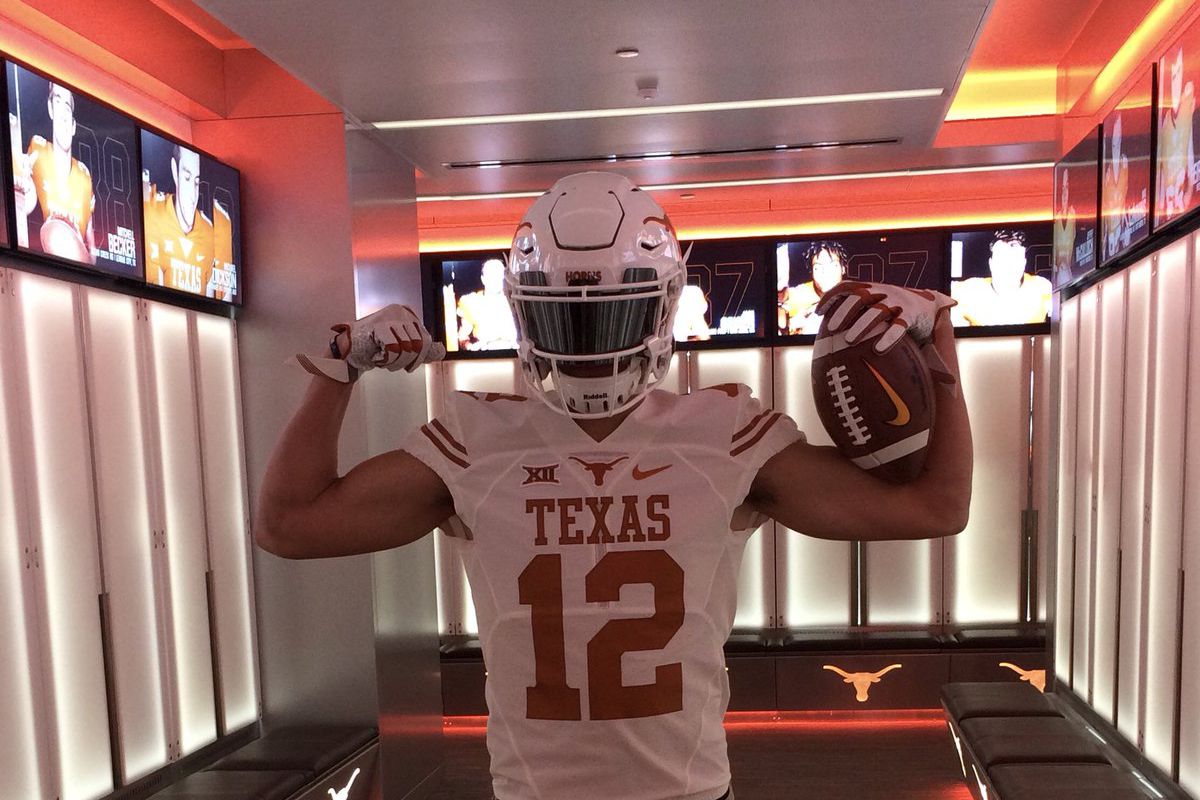In a major turn of events, five-star quarterback recruit Jared Curtis has chosen to commit to the University of Texas over the Oregon Ducks, following a significant revelation about NIL (Name, Image, and Likeness) deals. Curtis, a highly sought-after quarterback prospect, had previously been considering both the Longhorns and the Ducks as potential destinations, but the unveiling of Texas’s massive NIL opportunities ultimately tipped the scales in their favor.
NIL deals have become a major factor in college recruitment, providing athletes with the ability to profit from their name, image, and likeness while still in school. Texas has been a leader in capitalizing on these opportunities, offering substantial NIL incentives that have made them an attractive destination for top-tier recruits. For Curtis, who is projected to be one of the top quarterbacks in the 2025 class, the financial benefits offered by Texas were impossible to ignore.

Sources close to Curtis’s recruitment indicate that the Longhorns not only provided a lucrative NIL package but also emphasized their established platform for athlete branding and marketability. Texas has been known to foster a strong NIL program, with several of its athletes benefiting from high-value endorsement deals. This strategy has proven successful in attracting some of the nation’s best talents, and Curtis’s decision marks a significant victory for the Longhorns as they continue to position themselves as a powerhouse in college football.
Oregon, while also a competitive program, had been focusing on Curtis’s potential as a quarterback and their ability to develop his skills under their system. However, the financial aspect and NIL opportunities at Texas ultimately outweighed Oregon’s football development appeal. Despite Oregon’s strong track record for developing quarterbacks and its strong recruiting pitch, the NIL revelation from Texas played a pivotal role in Curtis’s decision.

Curtis’s decision to choose Texas over Oregon sends a clear message about the growing importance of NIL deals in recruiting. The ability to secure significant financial compensation while playing for a program with a strong national presence was too compelling for the five-star quarterback to pass up. For Texas, landing Curtis is a major victory and further solidifies their status as a dominant force in college football recruitment, especially in the era of NIL.
As for Oregon, the Ducks will need to reassess their recruiting strategies, particularly in terms of NIL, as they continue to compete for elite talent in a rapidly changing college football landscape. The recruitment of Jared Curtis marks a turning point in how college football programs navigate the intersection of athletics, finances, and player recruitment.
